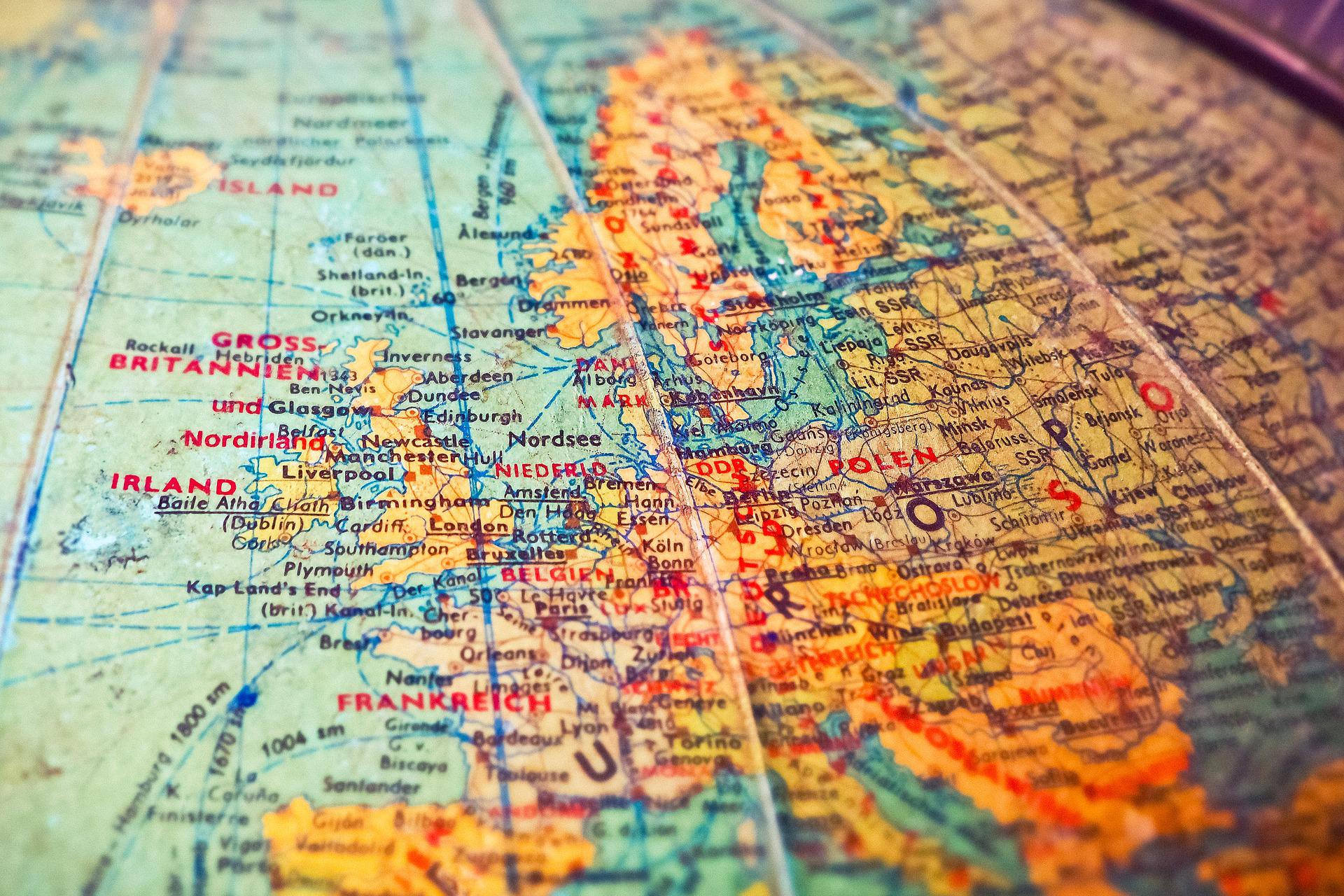
Student Experiences
5 key differences between American- and European-style PhD programs
Read a summary using the INOMICS AI tool
A PhD is a life choice. One of the crucial factors that a potential graduate student should account for is that doing a PhD in the US can be a completely different experience from doing a PhD in Italy, Germany, or elsewhere in Europe.
This piece primarily focuses on the differences and similarities between economics PhD programs on the two sides of the Atlantic. I later discuss how an economics PhD is organized in other parts of the world, as many other countries have modeled their PhD programs on one of these two styles.
Program duration
The most striking difference between an American and European economics PhD is the expected duration of the program.
In the US, universities traditionally offer a five-year degree where the first two years are devoted to training, and the final three years are expected to be spent on independent research. At the end of Year 1, graduate students take core examinations to progress to the second year. These are traditionally in Microeconomics, Macroeconomics and Econometrics. In the second year of an American PhD, students can choose courses that are closer to their research interests, which allows them to specialize in a particular field.
In Europe, graduate programs vary significantly in terms of both structure and expected study duration. A standard Economics PhD lasts three to four years. In the first year, graduate students typically follow PhD-level courses offered by their department and develop a research proposal. The next two to three years are spent on independent research.
Recently, many top European economics schools have started offering a 5-year PhD program following the American tradition. It is composed of two years of intensive classes delivered ‘in-house’ by the respective department, after which students are typically awarded a degree of a Research Master’s (or MPhil) and progress onto the research stage.
Some universities offer a three-year ‘research only’ program for more advanced students, although this is still uncommon. These programs are usually for students that completed a Research Master (or an MPhil) somewhere else or gained extensive research experience prior to their PhD.

Master’s degree requirements
The second difference between an American and a European PhD is whether one can apply with an undergraduate or a Master’s degree.
Most economics departments in the US have a preference for candidates with a completed Master’s degree. However, this is not usually a formal requirement: many successful applicants get in with an undergraduate degree and no or limited prior research experience. To strengthen their portfolio, especially when applying to top schools, some applicants spend a year or two as a predoctoral fellow (“predoc”) at a reputable department.
Suggested Opportunities
- Programme de Doctorat
- Posted 21 hours ago
PhD in Economics
Starts 1 Oct at CERGE-EI in Prague, Czechia- Programme de Doctorat
- Posted 23 hours ago
PhD in Economics, Accounting, Finance or Management
Starts 1 Oct at Berlin School of Economics in Berlin, Allemagne- Programme de Doctorat
- Posted 2 days ago
Graduate Program in Economics and Finance (GPEF) - Fully funded Ph.D. Positions
Starts 1 Sep at University of St.Gallen in Sankt Gallen, SuisseResearch flexibility
American and European doctoral programs also differ in the degree of flexibility that the students get when choosing their research topic.
In the US, a doctoral dissertation is a composition of several (typically, 3-4) research papers that might or might not be interconnected. They can even come from different fields in economics and demonstrate a diversified portfolio for a future PhD holder. A job market paper, which is chosen from the research portfolio and is usually the most promising and advanced piece of research, plays a far greater role for someone who wishes to pursue an academic career. This is because those pursuing an academic career will be required to submit a single paper for presentation at an annual American economics job market event, where recent PhD graduates are matched with academic institutions. The process is highly centralized in the US by the American Economic Association (AEA).
European PhD students typically develop an elaborated research proposal prior to commencing an active research stage. The projects (typically 3-4) are expected to be interlinked and within one research field.
In striking contrast to the US, many departments in Europe and the UK offer project-based PhD positions. That is, a professor (or a research group) submits a grant proposal on a specific topic to the national or European research council. If the application is successful, the allocated funds are used to cover the compensation of everyone involved: from research assistants and PhDs to postdoctoral researchers and principal investigators. Typically, several PhD students are recruited for one project. As the research topic is predetermined by the project, students have little flexibility to work on something else. This form of doctorate studies is rare in America.
Funding opportunities
Funding sources and opportunities for PhDs are another striking difference.

In America, PhD funding is typically a complex composite. The funds come from various sources: the graduate school, the department, or a dedicated charity or national fund. The form of funding varies, too: from teaching and research assistantships to merit-based scholarships. The final amount might vary from year to year and depends on the student’s individual circumstances.
In Europe, a PhD scholarship is usually a fixed amount offered for the duration of the program. Additional funds may come from teaching and exam invigilation activities (the latter being particularly common in the UK). The funds are allocated by the university or the department. For those pursuing a project-based PhD (see the previous section), the funds come from the sponsoring body and are administered by the department.
Moreover, in Europe, it is common to do an externally funded PhD: a company or an organization (such as a ministry, a national central bank, or a think tank) sponsors the doctoral degree for their (future) employee to research a very particular topic that is relevant for them. This is usually done in collaboration with a university, but the expenses are covered by the respective stakeholder.
Teaching expectations
Both American and European PhD programs offer significant exposure to teaching.
In America, teaching duties are not only an essential part of economics PhD training but also a source of funding in most cases. Teaching at both undergraduate and Master’s levels is considered a crucial element of a successful academic job market preparation for graduate students.
In Europe, the amount of teaching workload depends on the program and institution. In a standard 4-year PhD track, students spend on average 15% of their time on teaching. Project-based and externally funded PhD students are typically not expected to teach any classes, but the department usually provides the opportunity to do so at the student’s will. In the UK, for instance, PhD students can choose how many hours to teach: this work is paid on top of the base PhD scholarship.
How it works in other parts of the world
Universities in Australia, New Zealand and Canada typically follow the American PhD structure: two years of classes plus three years of independent research. A PhD experience there is comparable to the one in the US. Similar programs (in terms of organization) are offered by top Asian schools in Hong Kong, Singapore, and South Korea.
In other parts of the world, where economics research capacities are less developed, doctoral studies take various forms, such as employment at the national academy of sciences.

My experience of choosing a PhD
I applied for 7 PhD programs in both the US and Europe and got offers from 4. I personally opted for a Dutch 3-year program. From day one, I have focused on the research project that I started during my Research Master’s degree. The university also offered me the chance to take on teaching and supervision responsibilities from the first year.
My choice involved a trade-off, too: as I am not part of an established project and came with my own idea that had been partially carried out elsewhere, I had to accommodate more risks related to my research output. For example, I had to prove that my research idea fit the department’s agenda or that, as a newcomer to the faculty, I would be able to finish the chapters on time. But those concerns were swiftly managed thanks to the collaborative relationship that I built with my supervisors.
If you’re in the position that I was, and you already have a Master’s degree, a developed research idea, or some prior research experience, a 3-year or 4-year program in the European style can be an appealing option. But, for those students who don’t yet feel confident in their academic background but are committed to the PhD path, an American-style 5-year program can offer a great starting point.
Header and article image credits: Pixabay.
-
- Programme de Doctorat
- Posted 5 days ago
IWH Doctoral Programme in Economics (IWH-DPE) Call for Applications – Fall 2026 Intake
at Halle Institute for Economic Research (IWH) - Member of the Leibniz Association in Halle (Saale), Allemagne
-
- Programme de Doctorat
- Posted 3 days ago
Doctoral Program in Economics – 25 doctoral positions
Starts 1 Sep at Graduate School of Economic and Social Sciences (GESS), University of Mannheim in Mannheim, Allemagne
-
- Programme de Doctorat
- Posted 2 days ago
Graduate Program in Economics and Finance (GPEF) - Fully funded Ph.D. Positions
Starts 1 Sep at University of St.Gallen in Sankt Gallen, Suisse















